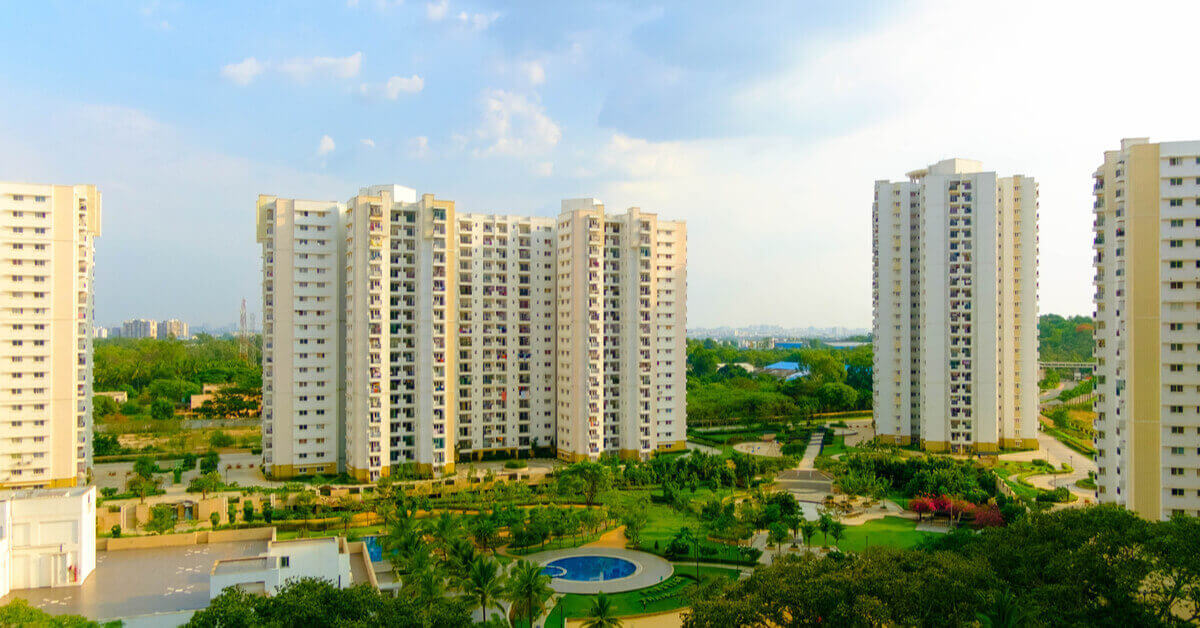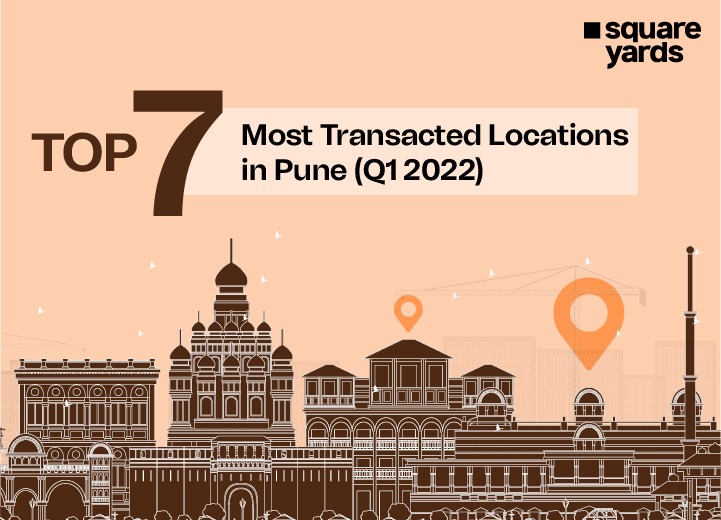As India released itself from the clutches of its oppressors and relished independence over the years, the women in Asia’s biggest red-light district were still struggling to stich the very fibres of their being. Among those who lived in that neck of the woods was a five-year-old boy. He was none other than Sanjay Leela Bhansali. With his larger-than-life cinematic vision of Gangubai Kathiawadi, he paid tribute to the women’s struggle in ‘Kamathipura,’ setting them free on the big screen 53 years later.
As India emerged from Independence in the 1960s, Bombay was a completely different kettle of fish. The city of dreams witnessed a cultural boom as India established itself as South Asia’s regional golden goose. Zooming in, there lies in the heart of this chaos a 150-year-old colonial housing structure sprawling over 39 acres, where Gangubai took her last breath. Bhansali revives the heritage of the past in his biographical crime drama.
Table of contents
The Backstory
Ganga Harjeevandas, or as she was popularly known as Gangubai, was a naive girl from Gujarat who her boyfriend tricked into prostitution. Like a phoenix, she rose from the ashes to transform her life and that of every girl who was forced into the same misery. Eventually, she becomes the head of the brothel and the voice of the sex workers. From having strong political connections to interacting with the then PM, Jawaharlal Nehru, Gangubai established an important place in the lives of the people of Kamathipura. Her efforts to put women on the map are still remembered and appreciated across the red light area.
Gangubai Kathiawadi: The Film & Intricate Framework

Creating a realistic movie meant mirroring the architectural structures and characters of the time. The film is set in the 1950s and ‘60s’ in Mumbai, taking us through the journey of Ganga Harjeevandas, also popularly known as Gangubai. This chapter has been taken from Hussain Zaidi’s book ‘Mafia Queens of Mumbai: Stories of Women from the Ganglands’.
This whole spectacle was inspired by historical facts, whereas the art and design of the entire film were a ‘vision turned into reality,’ inspired by Bhansali’s childhood memories.
Recalling his childhood, Bhansali revealed in an interview with Architectural Digest that the street lane was adorned with six theatre buildings, referred to as ‘Playhouse.’ The name was later changed to ‘Peela House.’
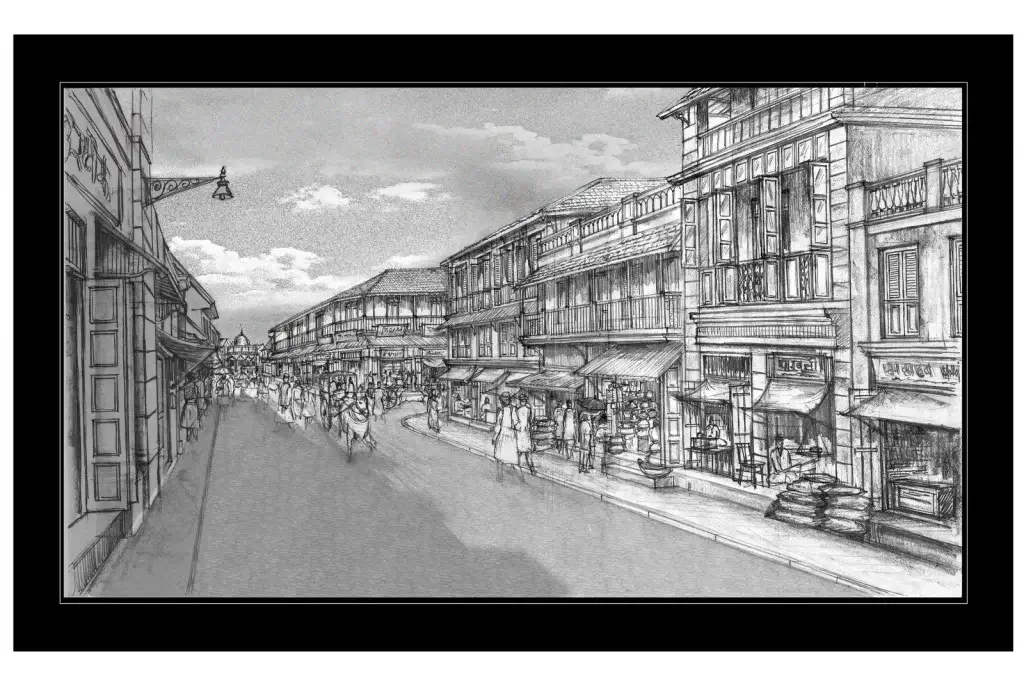
Every element on the screen is a reel from Bhansali’s past, displayed in his flawless aesthetic. The focus was diverted to the shots of three cinemas, where posters of the movies were cleverly altered to portray the changing timeline of Bombay. The entire set has been intricately designed with an eye for detail.
The Ardent Architecture
As a filmmaker, Sanjay Leela Bhansali believes that the ‘devil is in the details.’ The architecture at the time was an example of a simple layout with intricate details and materials that did not harm the environment. The movie’s set is a replica of this ideology and design. Wooden structures and joints dominate the framework, which is not prefabricated, murals and paintings. Great attention was paid to designing the courtyards and open spaces, as is visible in the film.
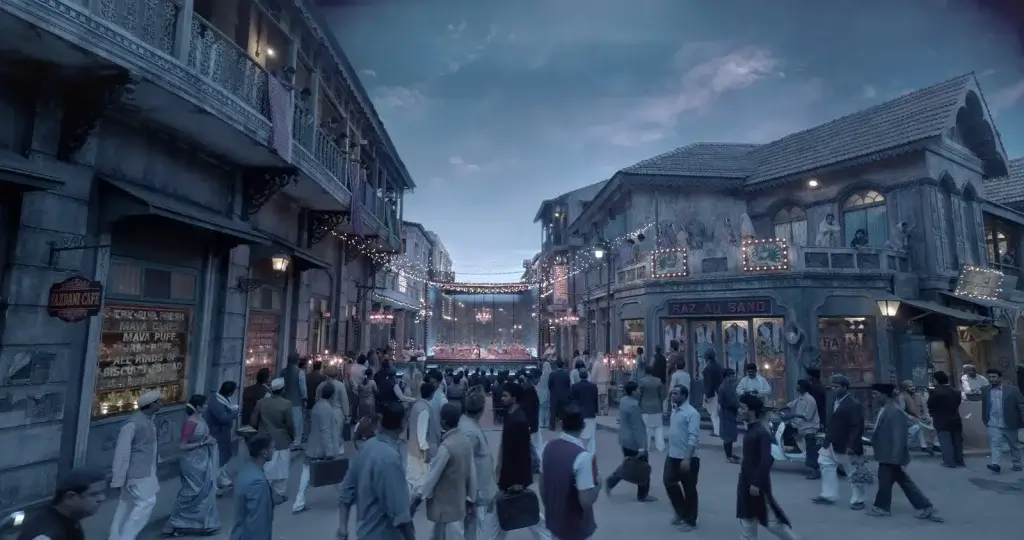
Another such inspiration comes from the decor details of the buildings and hand-painted posters used in Indian cinema around the 1920s. A perfect analogy, these posters were a masterstroke in bringing people to cinemas with all the sass in the form of bright colours and enticing images.
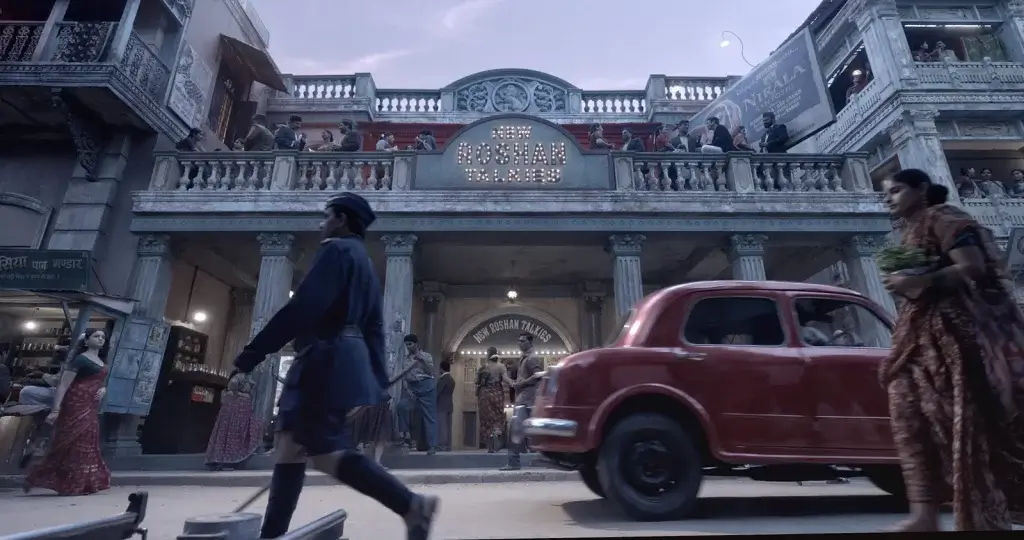
Strong use of purposeful imagery has been made throughout the film. One of the most famous scenes in the movie is when Alia Bhatt finally accepts her fate and adapts to the ‘mannerisms’ to attract customers. This scene is also associated with Bhansali’s memory of a café where he would notice the girls standing, smoking, and waiting with some typical Hindi film tunes in the background. This café is integral to the movie’s set, where he has framed such important scenes. The entire film has visual vignettes from Bhansali’s memories of his formative years.
The Emotional Threadwork
There is a common thread in all of Bhansali’s movies, and that is the protagonist’s right to dignity. Even though Gangubai was trapped in a metaphorical cage for the rest of her life, Bhansali gave her character a certain zest that he usually renders in his cinematic representation of the real-life characters that matter. This is Bhansali’s way of transcending a sense of life on the big screen with a splash of optimism for his viewers.
The film mirrored her real-life persona: Gangubai wearing white sarees. The colour white is considered the universal symbol of purity, connecting it back with how he portrays his characters. Gangubai in white looked ethereal against the morbid, sordid background (both of the sets and the environment). The scenes are crafted to bring out the essence of what Bhansali portrays through his movies—a courageous and optimistic character despite the surrounding obstacles. His ideology of finding beauty in situations of affliction – Quite a visual impact!
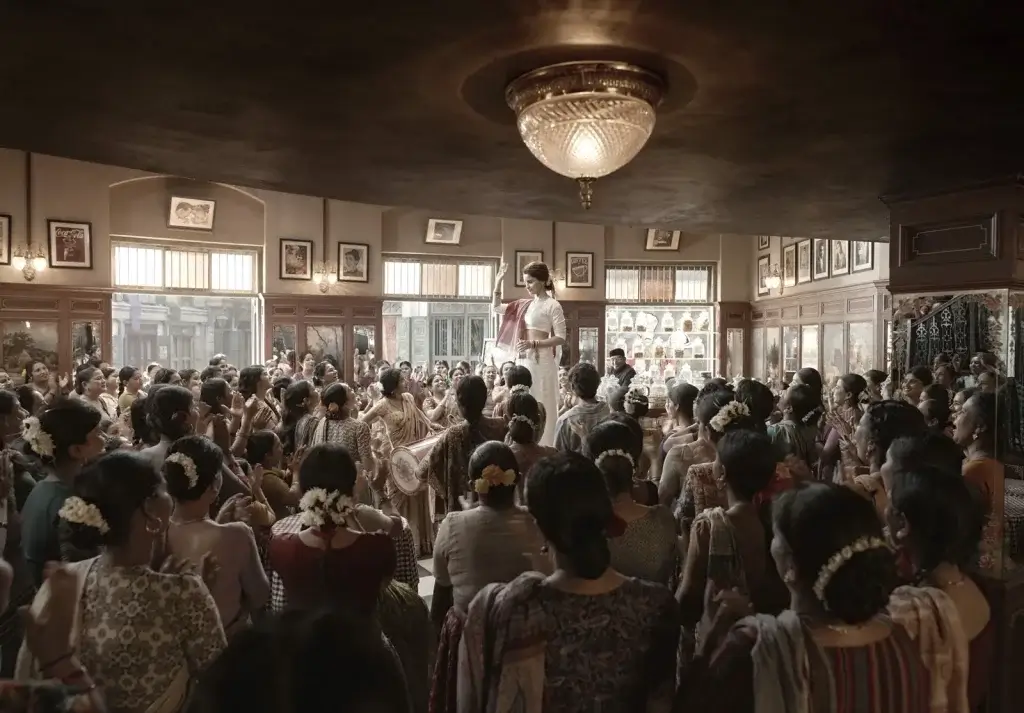
To portray these problematic situations, the production design team has put special effort into their work: details of the brothel walls are displayed as broken, pale, and faded. From utensils to artefacts to textures, every element of the room has been designed as if it were a scene from his own home.
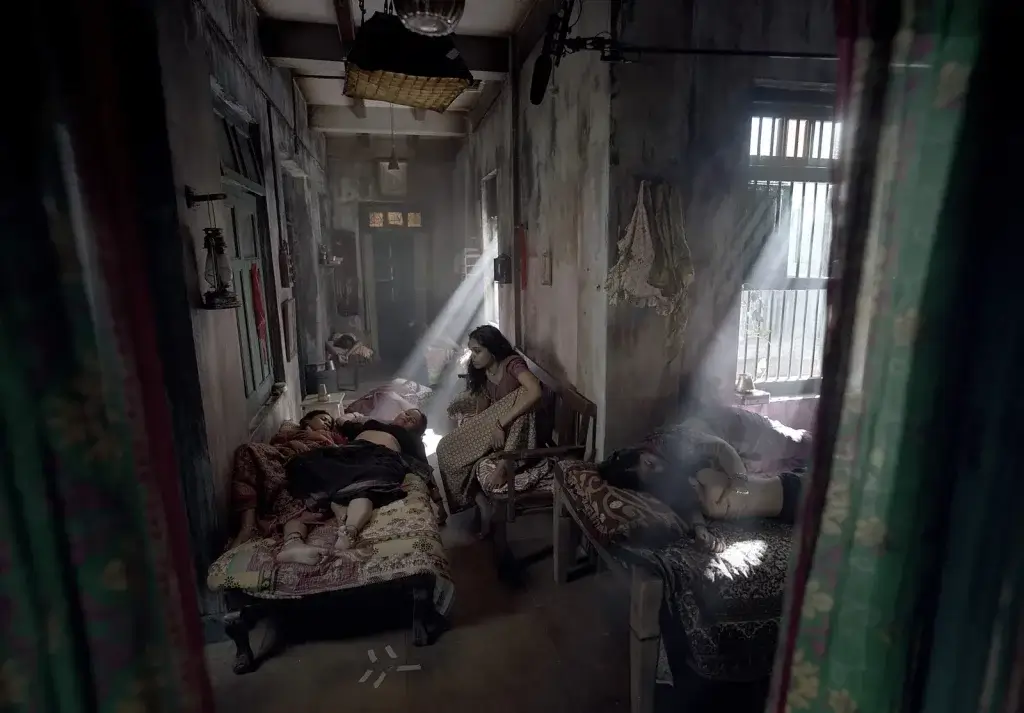
Larger than life is synonymous with Bhansali’s entourage and, more importantly, his films. Bhansali has described this factor in many interviews where he would draw a parallel reality without any borders to create grand spaces in his head.
The Director’s Cut
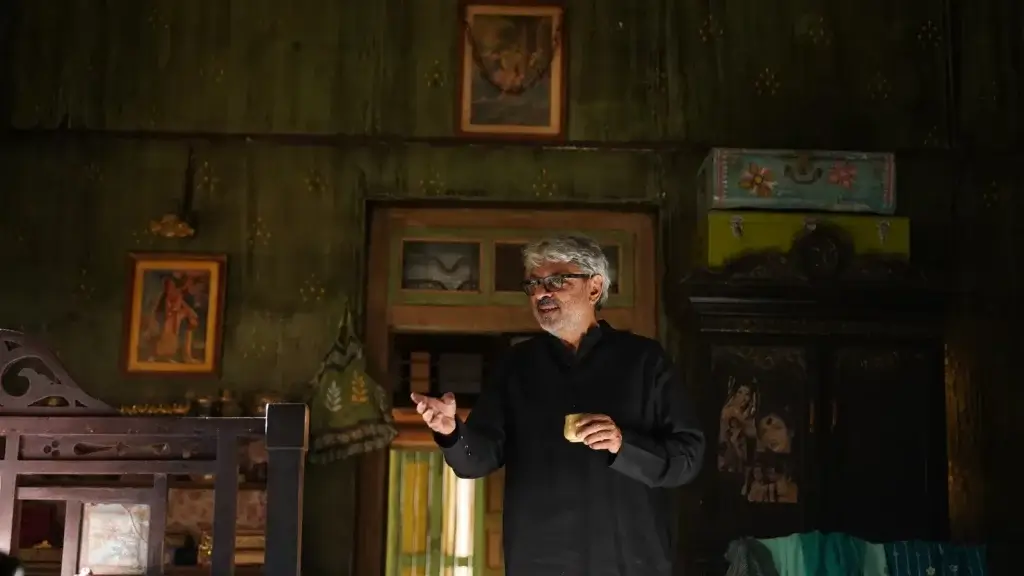
Bhansali has proclaimed ‘Gangubai Kathiawadi’ as one of his most personal works, as he has moulded the oppressive reality into a more romanticised notion on the big screen. Bhansali grew up in this dark and tough neighbourhood, which had a great influence on his formative years. The making of Gangubai proved to be a relieving experience for the filmmaker, allowing him to let go of the things he held close for decades. His craft has allowed him to use his artistic impression to portray a relatively sanguine ‘reality’.
With Gangubai Kathiawadi, the five-year-old boy’s life has come full circle, and we believe that only he could have given justice to her reel-life.
















